Start an online t-shirt business and start selling t-shirts today
Starting a business selling t-shirts might seem relatively simple, and it really can be – like with any business, as long as you have planned all the relevant steps, and done your research thoroughly. But even if it’s your first foray into the world of eCommerce, or even business, it doesn’t need to be difficult. In our post today we’ll walk you through the steps you’ll need to take to get your business started, and how to grow your business so you can succeed.
Why start an online t-shirt business?
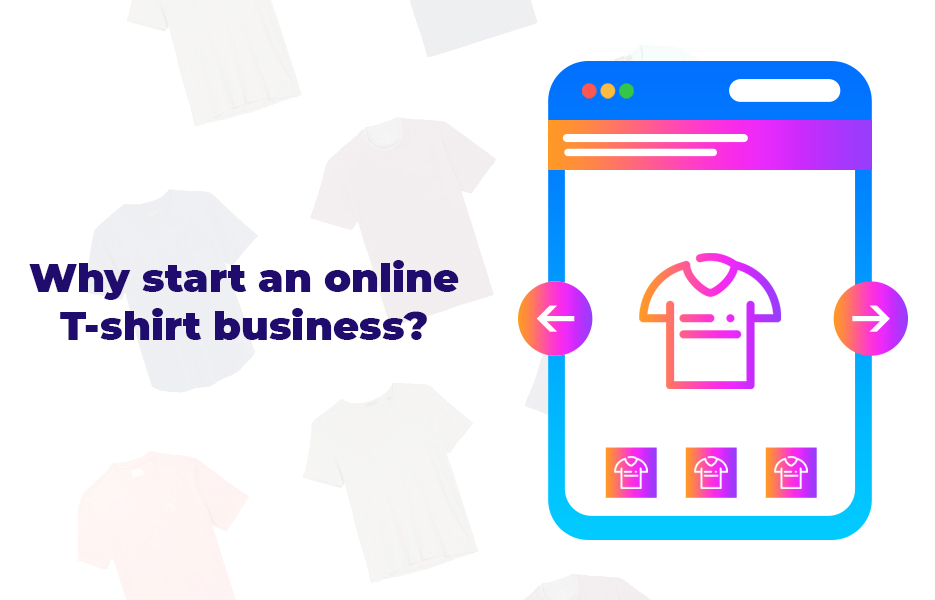
There are a number of personal reasons that you might decide to start your own online t-shirt business – from wanting an outlet for your creativity, to promoting a cause you believe in, to simply promoting your own business. It doesn’t matter what your inspiration is, or what you initially hope to achieve from it – what matters is that you want to do it.
But luckily for anyone who IS considering starting an online t-shirt business, the numbers are in your favour. The t-shirt business has been steadily growing and is predicted to continue to increase – it is likely to almost double over the next five years. This graph shows the upward trajectory of the market size worldwide in millions of dollars, and it is clear to see there’s some serious money to be made in the custom t-shirt printing market!
Starting your t-shirt business using print on demand
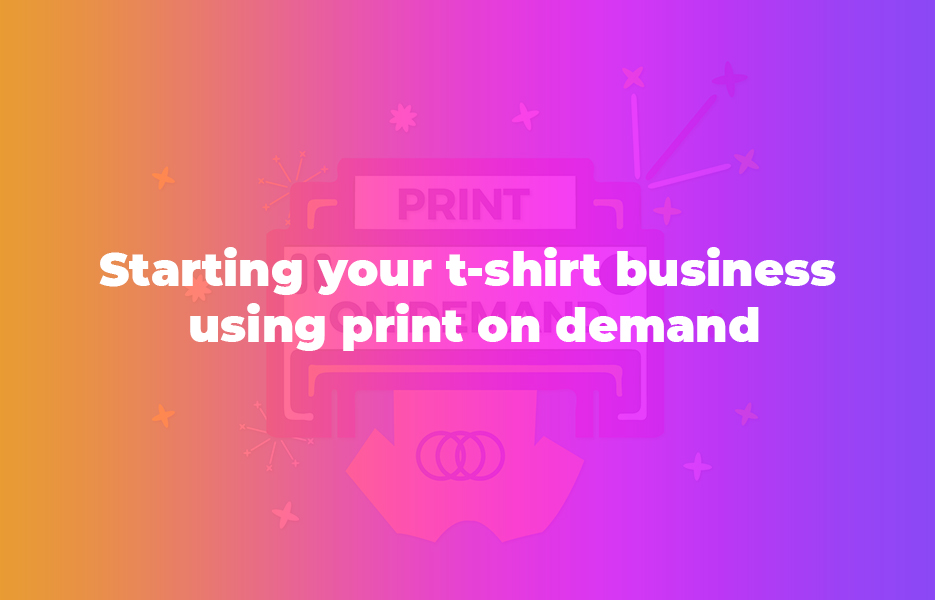
We’ll be talking about setting up a t-shirt business using print on demand services firstly, because for most people, it’s the most straightforward way to get started. It’s not the only route in, and we’ll talk about if you want to get your t-shirts made to your own specification a bit later.
But first, you might be wondering what the benefits of print on demand services are… So here is our list of pros and cons that you need to be aware of, so you can plan your business around them.
Benefits of print on demand
The benefits of using a print on demand supplier are pretty obvious at face value – you don’t need to have your own printing facility or to do any of the hard work of printing, packing and sending! But there are more benefits, so we’ll have a look in a bit more detail here.
Minimal upfront costs
Like with DropShipping, you won’t need to pay your supplier until you’ve received the order, and the payment from your customer. The bulk of your costs are going to be related to marketing – setting up a website, and any marketplace fees. Other than that, you’ve got the cost of your own time that you’ll be spending to create your t-shirt designs, and your social media marketing designs – but if you’d be doodling or being creative anyway, then why not use that time, and your creativity to do something that can earn you money?
No investment in stock
As we already said, you’re only paying your supplier when your customer places their order. That means you don’t have to pay for your design to be printed on hundreds of t-shirts of different sizes only to find that nobody wants size extra small, for example. Using print on demand means you’ve got your cash free to continue to grow your business – rather than being tied up in stock. So, if you don’t have cash available to buy stock, and a loan isn’t a solution that suits your business, then print on demand enables you to start selling without that investment.
In addition to having better cashflow, you won’t have to worry about storage costs – and let’s face it, boxes of t-shirts can quickly start to take up room, especially once you have more than one of two lines. It might be OK at first if you have a garage, or a spare room, but if you don’t, then print on demand saves you that concern – as well as you not needing to find time to get to the local Post Office, or arrange courier collection. Sounds pretty much like a win-win situation to us.
Fast delivery
Many print on demand companies are able to print and dispatch the same or the next working day. When customers receive their orders quickly, they’re more likely to leave you positive feedback – and all you need to do is ensure the order is passed through to your supplier quickly and accurately. Your customers won’t be likely to encounter your items being out of stock, which means they’re likely to come back to you time and time again.
You have complete control
Your designs are yours – and you want to make them exactly as you imagined them. You will be able to choose the colour of the t-shirts that each design can be printed on (obviously, subject to the limitations of your supplier) the styles that you want to make available and more. Some suppliers will even allow you to send your items with custom packaging, or to customise what goes in the package.
On top of that, you can choose where you’re prepared to sell the t-shirts – whether you want to make them exclusively available on your website, or you want to sell on absolutely every single marketplace you can think of. And of course, in addition to all those choices and more, you have complete control of if, and when you want to close your business. Since you won’t have any stock to clear, it’ll simply be a case of removing your listings and closing your social media channels. You might not be thinking your t-shirt business as being a long-term prospect, and if that’s the case (such as if you’re at university studying design, for example) then being able to close your business quickly may be useful when it comes to time for finals, graduation and starting your first graduate job.
Challenges of using print on demand
There might be quite a few benefits, but it’s not all plain sailing with print on demand t-shirt businesses – if there weren’t challenges, everyone would be doing it. However, forewarned is forearmed, so let’s take a look.
High costs
We’re not going to hide this – there is a concern with print on demand in that, per item, your costs will be higher. That means each t-shirt will cost more – and you’ll need to charge your customers accordingly. In addition, you’ll need to consider whether your supplier factors the cost of shipping into the cost of each item. If not, that’s an extra cost you’ll need to pass to customers. If you’re receiving orders from different countries, you might find it worth your while finding a print on demand supplier in a strategic location (or more than one, depending on your international success!), so that you can minimise your shipping costs and shipping times.
Creating the design work
Even if you’re naturally talented and every design you create looks great, some of your designs will simply sell better than others. You’ll need to establish what your target customers are really looking for, and try to meet that demand. If you’ve got a decent social media following, you might be able to get feedback for your designs from them, to see if it’s worth your time listing the items.
Copycats
This happens absolutely everywhere in the world of fashion, and elsewhere too – once something becomes popular, it simply gets copied by others. As the internet gives us access to absolutely everything worldwide, there’s nothing to stop people copying your designs, or creating ‘inspired by’ designs. You can, of course, use watermarks or add your logo to your design, and your mockups – but you’ll need to be ready to accept that if your design is truly great, you’re likely to get people who want to copy it. As Coco Chanel said it best: if you want to be original, be ready to be copied. However, there have been so many replicas and ‘inspired by’ designs, fakes and knock-offs and yet Chanel still remains one of the most successful high fashion houses ever. If you encounter someone copying your designs, consider it a sign that you’re on your way!
Quality control
You’ll be relying entirely on your print on demand supplier to be able to fulfil your orders, and you’re not even likely to see any of your orders – because your supplier will be sending the order directly to your customers. You’re not going to be able to check the quality of your final products before they’re shipped – which means you’ll need to be able to trust your print on demand supplier will create your t-shirts to a standard you’d be happy with.
Even if you find a great, reliable supplier that you’d be happy to work with indefinitely, it’s a good idea to have a backup plan in case something goes wrong for that supplier’s business. Even the most robust businesses aren’t immune to ‘acts of God’ like fires or earthquakes. You won’t be privy to your supplier’s financial situation either, and you don’t know what is going on behind the scenes in a business – so having a contingency plan to keep your orders being dispatched is a good idea, just in case your supplier ceases trading unexpectedly.
Find a niche

Knowing your target market is absolutely essential to a successful t-shirt business. Of course, the appeal of t-shirts transcends many different demographics – there are relatively few people (in the western world at least!) who haven’t worn a t-shirt – but you do need to know who you are targeting.
Identifying your target audience, and the niche you’re targeting will be key to your success. That’s the specific group of people you’re going to be trying to sell to. So, you might choose to create t-shirts that specifically appeal to parents, fans of different types of fashion, pet owners – there are plenty of opportunities, you just need to establish which one(s) you’re going to try and appeal to.
Try and find out absolutely everything you can about people who are in the niche – your target customer research will help you considerably going forward, and help you target your marketing accordingly.
Create a business plan
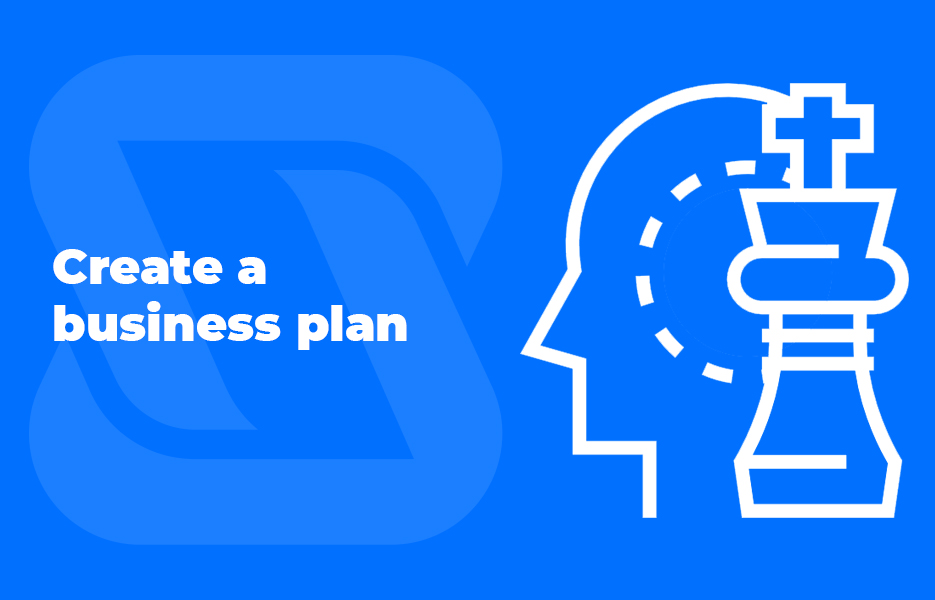
We’ve all heard it most of our lives – perfect planning prevents poor performance – and nowhere is this more true than when starting a new business. Having a strong business plan will help you to stay on track, and help you to ensure that small but not insignificant tasks don’t get forgotten. Being able to put the appropriate time and effort into each task will mean you won’t have to rush to make decisions at the last minute.
If you’ve never started a business before, it can be hard to know where to start, or to get overwhelmed with the number of things you need to do to get going. There is plenty of information available about what you need to include in your business plans, but each business is different – so you might find you need to add extra points in, or that you don’t need to do some items. If you’re looking for business plan templates to make things even simpler, there are some great links on the gov.uk website. (if you’re in the UK, while you’re there be sure to check out what you need to do to register your business and what you’ll need to do about your taxes – you don’t want to end up with a huge tax bill!)
Create your designs
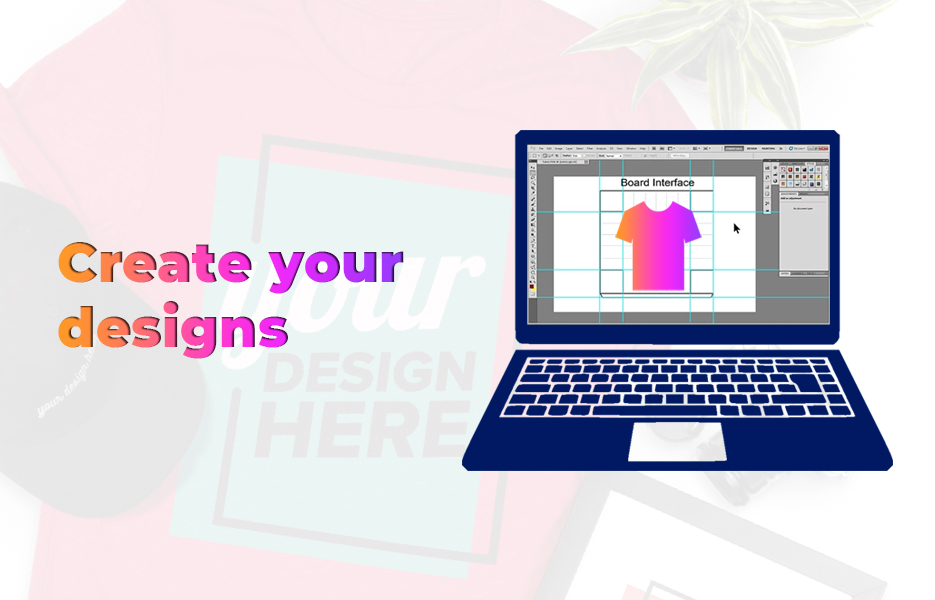
Obviously if you’re a talented artist or designer, this bit is probably going to be easier (and more fun!) for you. As a writer without a visually artistic bone in my body, I’m not going to tell you how your design process will work. Do what is right for you – whether that means you’re drawing and scanning your designs, using photographs or creating something in Photoshop.
That might sound great if you’re artistic, but if you don’t have outstanding talent, or knowledge of Photoshop, the good news is that your designs don’t have to be intricate or complicated. In fact, in many cases, the simpler, the better. Using design tools that are freely available online like Canva, (who have an awesome service where you can print t-shirts directly from their platform!) Pablo or Gravit can help you to create just the design that you want using simple drag and drop functionality, and without needing to learn how to use complicated design packages.
Many t-shirt brands have made great money leveraging the most popular phrases of the year. For example, in the UK, 2020’s most popular phrases are likely to be ‘stay at home’ and ‘thank you NHS’. Looking at Google Trends , and social media trending tools can help you to establish what is likely to be successful right now.
- Look to classic statements from scholars in the fields that appeal to your niche – such as Martin Luther King, tech leaders or feminist thinkers.
- Take lines from movies or TV shows – whether they’re current shows, or they’re classic movies, fans are looking for t-shirts with those lines on them!
- Use quotes from books – again, you might choose from historical literature, or more modern texts.
- Consider using satirical spins on political commentary such as the now infamous declaration ‘Fake News’ by Donald Trump.
We probably don’t have to tell you that you may need to tread carefully with some designs. You need to ensure you’re not going to break any copyright or trademark regulations, since at best you might encounter a cease and desist letter, but at worst, legal action that ruins your business. Legal action for any business can be a headache, but if you’re in the first few months of your business, this type of problem could put you out of business permanently and leave your bank balance much worse for wear. Not exactly the sort of outcome you are hoping for.
Create your mockups
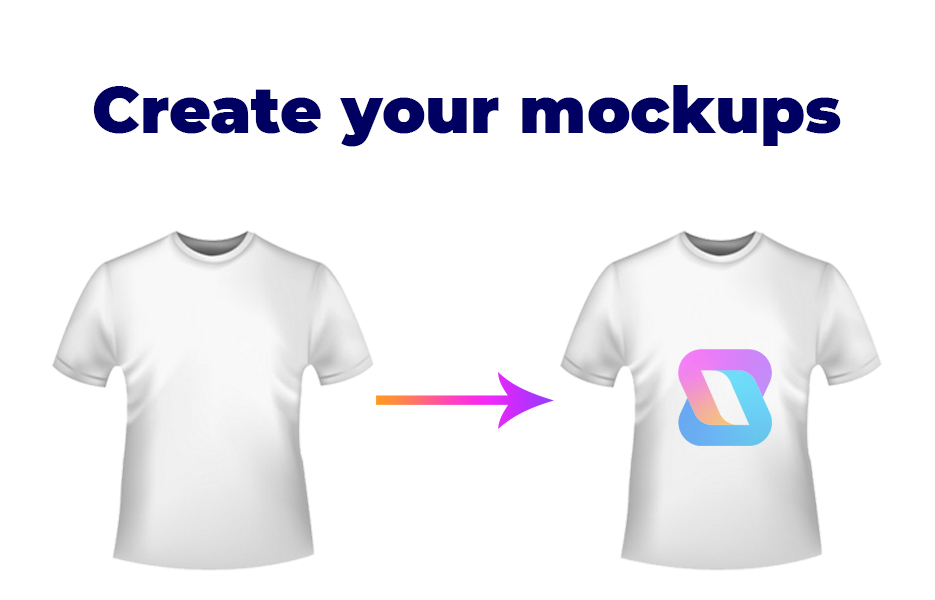
Depending on the creative ability you have, your designs might be created by hand using ink or paint, on Photoshop or a similar design package, or some other method that we’ve not even thought of.
If you’ve got just one design that you’re creating, perhaps it won’t be too much of an issue to create your design and shoot your own photographs. But longer term, as your range grows, that’s not likely to be sustainable – even if you have a suitable camera and funds to invest in your samples.
Without the right kit, suitable models, studio space or location (and suitable weather!) for taking your photographs, it can get expensive really quickly. That’s why using mockup tools are such a great idea – you can create images that show how your final products will look, but without needing to photograph them, or without needing to using applications like Photoshop, that take up too much time to learn. They’re incredibly useful, whether you’re in the first throes of starting your business or you’re further along the line. We published a post about them a while ago, so we won’t cover that information again here – head here to find out more.
You can also use mockups to test your new designs – before you even get to listing your t-shirts for sale anywhere online!
Test your designs
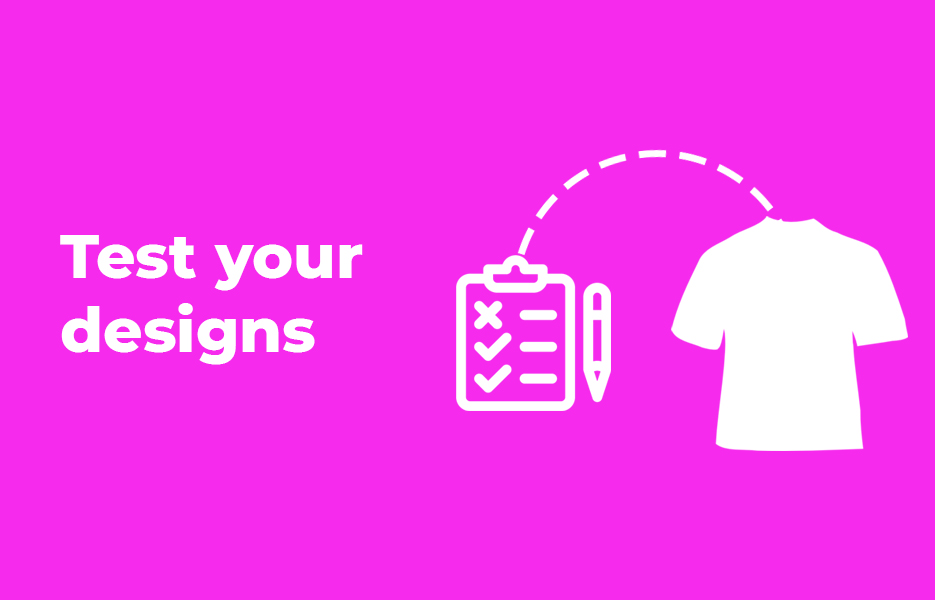
You could simply launch your designs with no testing, but it’s a good idea to do a little testing before you take the time to start listing your t-shirts everywhere. You don’t want to find out the hard way that you’re inadvertently offending a group of people with your designs (although there are plenty of designers who are deliberately trying to offend, and that’s their unique selling point!). If you’re able to show people that would be in your target customer group in-person, so much the better, but if not and you’ve grown a decent social media following, check with them by posting some of your images.
Go through your feedback carefully and ensure it’s mostly positive – there are bound to be some people who don’t like it, but as long as negative feedback is on the lines of ‘not my cup of tea’ then you’re good to go. If you find you get feedback that genuinely upsets people, consider why, and if you want to risk your brand because of it – or if you want to use offensive designs as part of your brand’s identity.
Find a great print on demand supplier
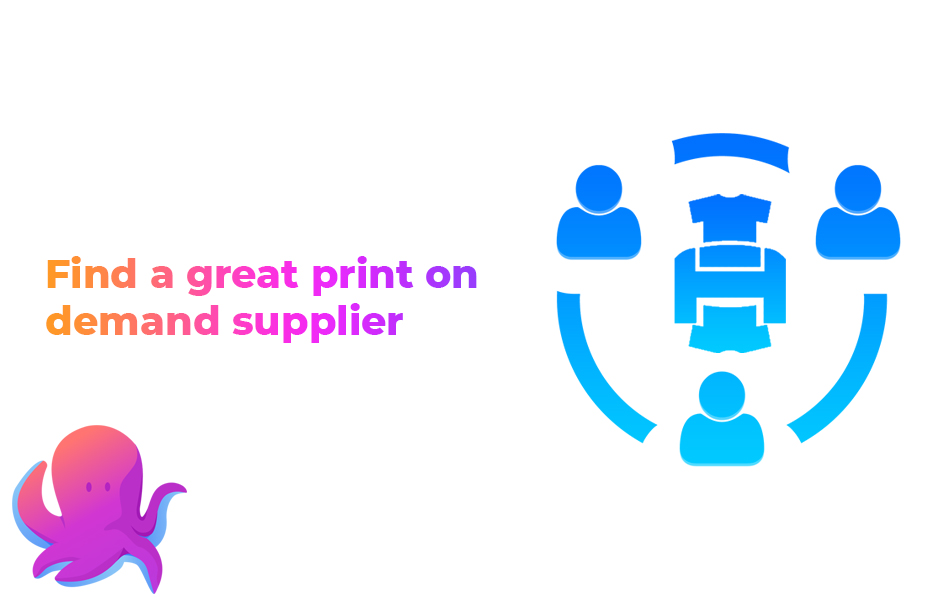
Print on demand is a business model that allows people to create products with their own designs, and to print the number of products they want to create at a time. Print on demand is generally thought of for clothing, but extends to products like mugs, canvas prints and much more.
You’ll choose your supplier through a combination of reviews of the businesses, and how much they charge for each item. The more items you order from them in one go, the cheaper the per-product price is likely to be – but whether you can order more than one at a time will depend on whether you have cash to invest or not. But this isn’t the only thing that you’ll need to consider.
Ordering more than one at a time means you will also have storage costs, and you’ll need to deal with the hassle of dispatching your items to your customers – whether you decide to work with a courier or postal service. It’s also an extra cost to you as well, since your print on demand supplier will include the cost of postage in their price.
There’s a number of print on demand suppliers that are highly rated online. You don’t have to use one of these – you might choose to work with a smaller company that is local to you if they can provide you with a better, or at least comparable service for you and your customers. Building strong working relationships with your print on demand supplier is easier if you can pop in and see them periodically, of course – but it isn’t likely to be a problem if you can’t.
- Printful
- Redbubble
- CustomCat
- Printaura
- Viralstyle
- Zazzle
- TeeSpring
- Printify
- Teelaunch
- Society
As we mentioned previously, it’s a good idea to have a backup plan for if your supplier encounters problems, or if for some reason they have a delay with your orders. Knowing who your backup supplier is before this situation occurs means that if, or when it happens, you’ll be totally ready, and can continue business as usual.
Create samples to check quality
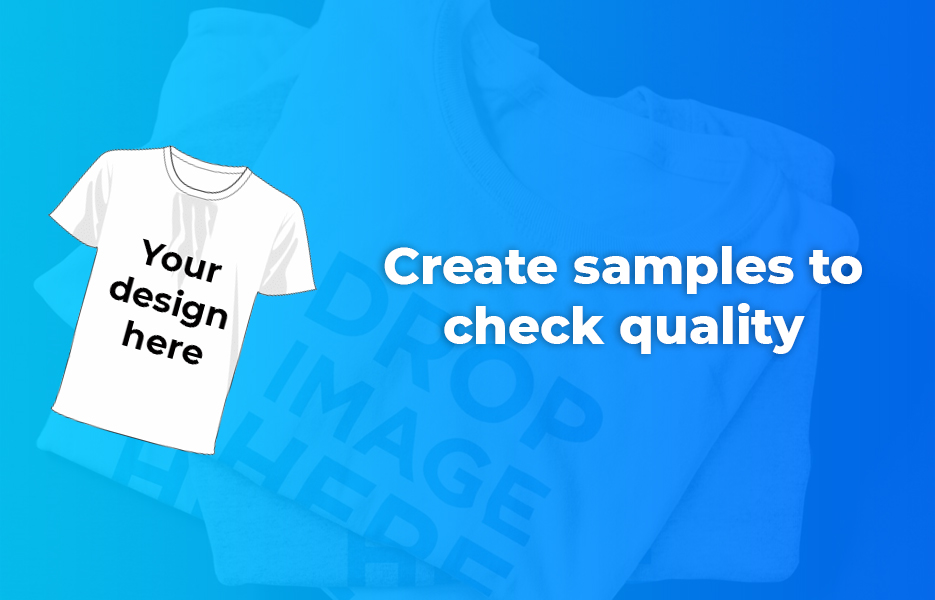
Your products are going to be what makes your money – with the first few purchases ultimately building your reputation when customers leave feedback. Feedback and reviews, whether on the website or marketplace, or on review websites for your company are one of the things that can make or break a business in their first year. So it makes sense to get samples from the suppliers that you intend to work with. Many print on demand suppliers have sample items that you can order before you start selling, so you can ensure the quality of their basics before printing.
It’s a good idea to order at least one of your designs too, and to do some serious testing. Does your t-shirt feel good to wear? Does the dye come out of it if you wear it before it has been washed? What about when you’ve washed it – does the colour hold up well, and the print? It is likely that the supplier will be able to tell you about many of these things, and many reviews will mention the same, but it’s worth finding out for yourself, so you can be confident in your products.
Set up your online store
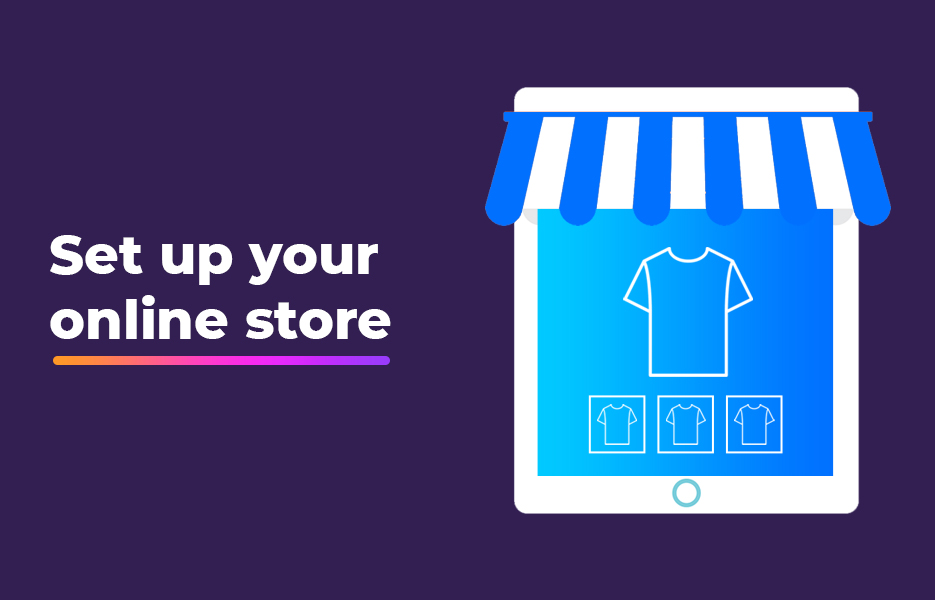
Having your own eCommerce website is easier today than it ever has been. There are pretty low costs associated with having your own website – depending on which setup you choose, you might only have domain and hosting to pay for.
The three big names in eCommerce stores are WooCommerce, Magento and Shopify, but they’re by far not your only options. PrestaShop, OpenCart, osCommerce, Zen Cart, nopCommerce and 3dcart are all fantastic options, as are X-Cart, Zencommerce and Kartrocket. We talked about these options and the associated costs on our post about DropShipping on Shopify – but some of these are open source, which means they’re also free to use. Sounds like our favourite price. However, not all of them are as straightforward to use as the others – which means you could need to use a developer in order to create your website, or consider using a website builder like Shopify that is designed specifically to help people who don’t have technical skills to get started.
Start selling on marketplaces
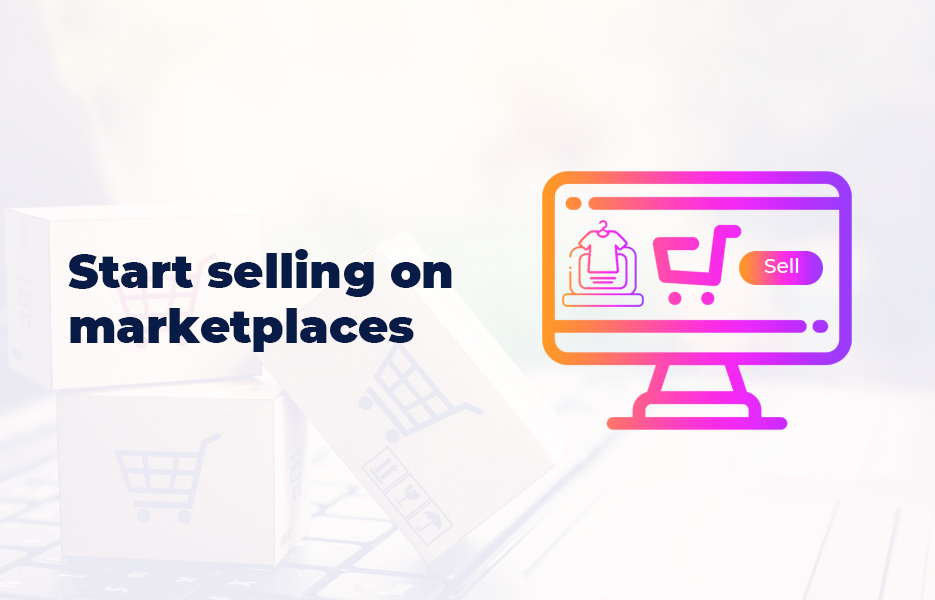
This just makes sense – the more places you list your t-shirts, the more likely you’ll be able to make sales. However, it’s not always as simple as sticking a listing up and waiting for the sales to roll in. Selling on marketplaces usually comes with a cost, and you don’t want to end up out of pocket because nobody bought your product there.
Since almost all the marketplaces (that we know of!) charge you somehow – whether they charge you before, or after you have made your sale. If you’re starting off as a new seller of t-shirts and you don’t have a huge amount of money to invest in your business, then selecting the marketplaces that charge after you have made a sale is going to be the best way forward.
There are three ways that marketplaces charge their fees – although just to keep things interesting, some marketplaces use a combination of ways to charge!
The commission model is where the marketplace doesn’t charge to list an item, and doesn’t charge a monthly subscription – you simply pay a fee when a customer orders and pays for an item. The commission that the marketplace charges you could be a flat fee, a percentage, or in some cases, a combination of both. Since marketplaces that work on commission depend on sellers making sales, they often have tools available to help sellers optimise their sales – and these tools include SEO optimisation, sales reporting, and so on.
The subscription model is exactly like it sounds – you pay a monthly subscription in order to sell on that particular marketplace. This model could work well for businesses that have a lot of different t-shirt designs, or when you have scaled up and are selling other items as well as t-shirts. Of course, you’ll need to make enough sales on that channel in order to make it worth paying the subscription, so be sure to do your calculations carefully.
The listing fee model is when you pay to add an item for sale on the marketplace. Many of the marketplaces that use this model will charge you even if your item doesn’t sell – and you’re likely to have to pay each time the listing renews. That means you might want to only use marketplaces that use the listing fee model for your most successful lines.
We wrote a huge post about how to choose your sales channels back at the start of this year – so for more guidance, and to find out the pros and the cons of selling on marketplaces and your own website, head there.
Promote your brand

We’ve talked about using social media to promote DropShipping businesses at length on the blog before – and for good reason. Once you’ve built your following on your channels, you’ll be able to get your t-shirts (and any other products you decide to create) directly in front of the sort of customers you want to reach.
In addition to being able to promote your products on your channels using the sort of posts that we’ve all come to know and love, there are some incredible eCommerce functions starting to crop up across the different types of social media. Many of these allow customers to shop directly from their feeds – which means they don’t even need to leave the app to find your website and make their purchase. Take Instagram as an example. You can use the swipe up function to allow customers to shop directly from your feed, but you can also tag your products on your photos, just like you would tag another Instagram user. This tag then links directly to your product page on your website, so followers and potential customers can find your items immediately.
There are so many other eCommerce options on all the different social media, and new options are being added all the time – so it is worth checking the latest developments on each platform periodically.
Creating your own t-shirts
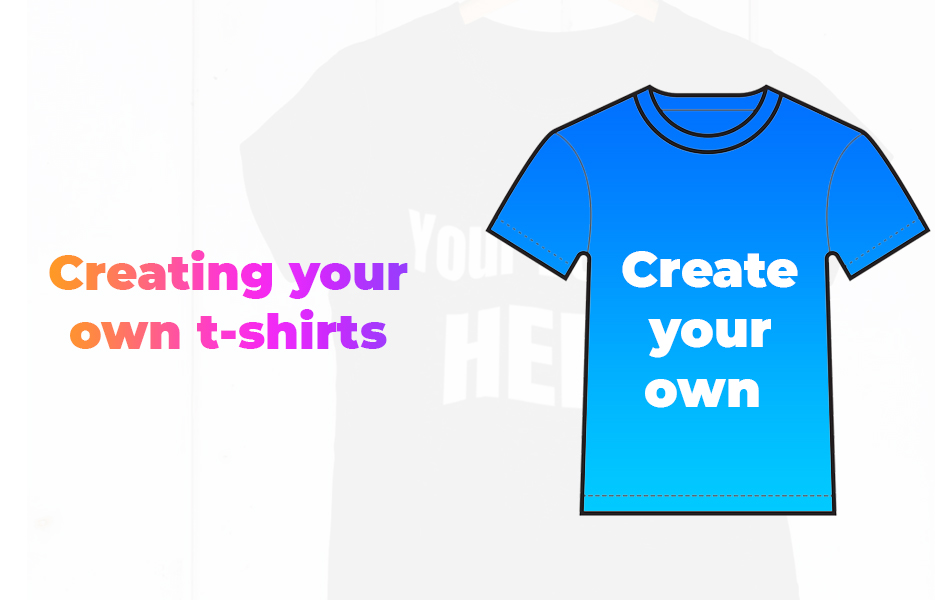
Once you’ve got your business up and running, you might simply keep adding new designs if you’re happy with the quality of your t-shirt supplier. But what if you want to create your own t-shirt designs? You will need to find a clothing manufacturer – and if you’re making enough sales, you’ll need to find a manufacturer who can create the numbers of garments that you need.
Working with clothing manufacturers means that you can create the large numbers of items that you need, and you can create unique designs which can mean that you’re able to charge more per product, but there are some challenges that you’ll face if you decide to work with a manufacturer. You’ll need to invest in your products up front, to start with, which increases the risk to your business because your cash is tied up in stock until you can sell the items. Not only that, the success of your business becomes dependent on your manufacturer – so should they encounter a problem, such as getting supplies, or they go out of business, your business is going to suffer too.
We wrote a lot about finding clothing manufacturers in our recent post, and so if this is something you’re considering, head over there to find out all the details.
Expanding your business

Once you’ve got a successful business established, you’re likely to want to keep expanding. After all, when you’ve mastered becoming successful, why stop with what you’ve got? There are plenty of ways that you can use to expand your business, and we’ve listed some here – but they’re not the only ways you can increase your profits. Different niches present different opportunities, and by this point you’ll be the expert in your business, so you’ll be able to identify the opportunities that are suitable for you.
Other print on demand items
When you start creating t-shirts for your business, it’ll quickly become obvious that there are opportunities to create other items of clothing using print on demand services. Different styles of t-shirts, hoodies and hats are just the start of it – many print on demand companies will be able to produce tracksuits, cardigans, aprons and even underwear! Remember though, not all customers will be interested in every type of item you could produce, so use your target customer research to establish what will be successful for you.
In addition to clothing, you might use print on demand services to create other household items with your designs on – think about adding coasters, tea towels, or cotton shopping bags, as well as stationery items such as pens, notebooks and folders. If you’re lucky enough to be a creative type who has a lot of designs, you can also use print on demand services to print onto canvases, or onto vinyl wall decals, if your designs work for those.
Of course, these aren’t the only items that your suppliers might be able to create – you’ll need to see what your supplier, and others can offer you.
Extending your offering with DropShipping
It goes without saying that we’re big fans of selling at Avasam. We love the DropShipping model and the flexibility that it affords sellers – and it benefits the suppliers too! If you’re new to the world of DropShipping, you can find out all about it here, but there is so much more information about it on our blog that we couldn’t possibly link it all.
There are plenty of ways to start selling items that will appeal to your target customers, but a robust DropShipping platform and a strong business plan are the two main things that you’re likely to need to be successful with DropShipping. We recommend signing up for a free Avasam account of course, but there are alternative DropShipping arrangements available – and we compared some of them in this post.
The main draw for sellers to start selling using the DropShipping model is that there is no upfront investment required. Because you don’t need to buy stock from your supplier until you have made a sale, and the supplier sends your product directly to the customer, there’s no need for trips to the Post Office or having to work with a courier.
Because you’re not investing in stock, you won’t have to run sales promotions to clear dead stock and free up your cash. Of course, there are other reasons for running such promotions, but the key is that you can do so on your terms, rather than out of necessity. You will be able to sell your DropShipped items everywhere – from Amazon to eBay, to your own website and even to customers offline, if you’re at trade events, summer fairs or Christmas markets.
Other ways to diversify your business
If you’re not paying for stock upfront, you can use the funds from your t-shirt sales to diversify your business and indulge your other passions. T-shirt businesses can be a supporting act for many other endeavours, including creating other print on demand items. Here are a few ideas that you might use your t-shirt business to launch!
Creating your own clothing line
Once you’ve got the hang of print on demand, you might decide to create your own fashion range. Whether you choose to do this with DropShipping, as we spoke about above, or you create your own designs and work with a manufacturer (or of course, a combination of the two!) the opportunities are endless. As with all businesses, you’ll need a strong social media strategy to ensure the reach of your products is as big as possible.
Create and sell hand-crafted items
There are more and more people looking for unique products for themselves and for gifts. The rise and rise of Etsy and Amazon Handmade means that it is easier than ever to sell items that you create yourself, whether that’s handmade clothes, knitted items, or items made from wood or glass. There are more ideas here than we can list – but suffice to say, you can diversify your business by selling whatever you make for your hobby. After all, there are only so many gifts you can give to your family and friends – but there are plenty of people who are likely to be looking for exactly what you are making.
Create digital products
If you’ve got a talent or a passion for something, earning money from it is the dream, isn’t it? If you can create something that you can provide in a digital format, you’ll have few costs – which means your profit margins on each sale will be higher. And depending on the product(s) you’re putting together, they have the potential to make money indefinitely – which allows you to continue doing what you love. Ideas that work well include:
- Releasing your music – whether you release original material or cover the work of other musicians
- Create eBooks for download – try selling through your website, or on the Kindle or Kobo stores
- Release sewing patterns or instructions for creating garments
- Create courses to learn a language or a skill – this might incur hosting costs, especially if you are creating an interactive course that customers access online
- Creating stock video or photography
There are plenty of other options that we’re sure you can come up with. However, your digital products need to be valuable enough that people are going to be willing to pay for them even though they’re not going to be receiving anything physical. There are so many options that people are offering for free, that you’ll need to provide significant value to encourage anyone to purchase your products.
Create a charitable endeavour
Customers are becoming more concerned with ethical considerations, so businesses that do good alongside their main goals are increasingly successful. Let’s look at TOMS as an example.
Blake Mycoskie set up TOMS in 2006 with the aim of providing one pair of shoes for a child in need for every pair bought. This quickly moved into eyewear, which allowed thousands of children to have their eyesight restored on the one for one model. The movement has also helped train local people in countries with children in need of these services, which empowers them to become professionals in fitting glasses and so on.
Of course, TOMS is an example of a company that did things right when creating brand awareness and resonating with the desires of their customers – to do something good with products that they would want to buy anyway.
There are many different ways to create a charitable endeavour, but if you can appeal to the right audience, and have the right products or service, then your business can be incredibly successful. Be sure to study the businesses, or ethical brands that you hope to replicate the success of, and create a really strong business strategy before you get started.
Sell a service
You might already have a ‘day job’ that you are running your t-shirt business alongside. But if you’ve been out of work, or you’re creating a career that works for you and your family, and you have a skill that you can offer as a service, then you might tie two – or even more – together.
If you’ve trained as a hairdresser, for example, you might start with your business as a mobile hairdresser, and create t-shirts for hairdressers on sale on your website, and on marketplaces like Amazon and eBay. If you’re DropShipping as well – for example, if you’re DropShipping hair accessories, tools or products, then that part of your business will need social media promotion too.
You’ll need to cross-promote yourself and your business(es) – so if you’re updating your Instagram Story for your t-shirt business, you might mention your other business, and vice versa.
Become an influencer
You’ll have set up your social media channels to support your online t-shirt business – so why not monetise them? We’ve spoken about how to make money on YouTube , and how to make money on Instagram previously, and there is so much information to make use of on those posts that we won’t replicate that here. But suffice to say, once you have a decent following on your social media channels, you’ll have plenty of opportunities available to you to make money.
Like setting up any business, creating a successful online t-shirt business takes a lot of time and preparation. Without preparing properly before getting started, you’re likely to find you, and your new business struggle to gain traction. Here are our key points to remember as you’re getting started:
- The t-shirt industry is set to grow significantly over the coming years
- Print on demand is by far the easiest way to make your designs available
- Finding a niche, and doing your target customer research is time well spent
- Your print on demand supplier is essential to the success of your business
- Getting your marketing right and building your brand will ensure you reach the right customers
There we have it! We mentioned it earlier, but if you want to expand your t-shirt business and sell additional items with no upfront costs, try adding DropShipped items to your store. With Avasam, it’s easy to do, and there are thousands of products from suppliers in the UK and Europe waiting for you to start selling today. Customers receive their orders in just a few days, unlike when you DropShip from overseas suppliers. Not only that, it’s free to sign up, and our packages scale gradually, to help give your business the best chance of success. Take a look today and see how we can help expand your business. Any questions? Our team would love to hear from you. Call us on +44 (0) 330 113 7788 or chat with us on the live chat during business hours.
This post contains affiliate links. If you use these links to buy something, we may earn a commission. We only use referral links for businesses that we would use ourselves. Thanks for your support!

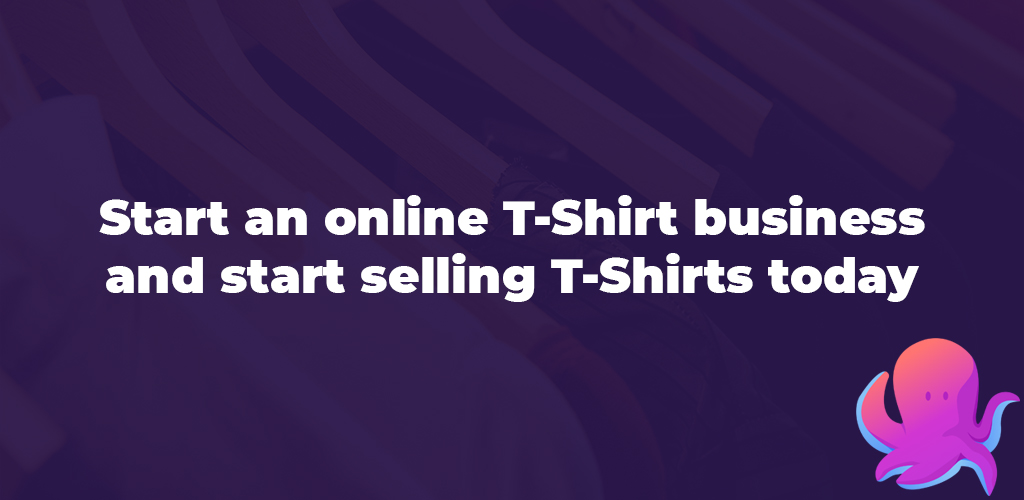






DropShip products from verified suppliers to diversify your inventory and scale your eCommerce business